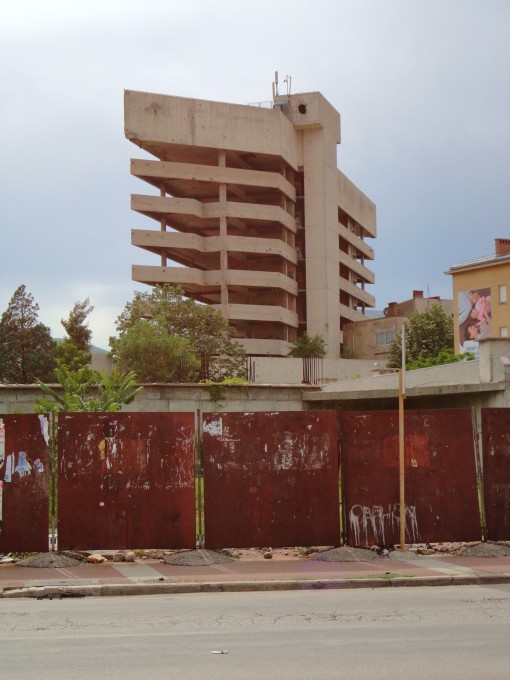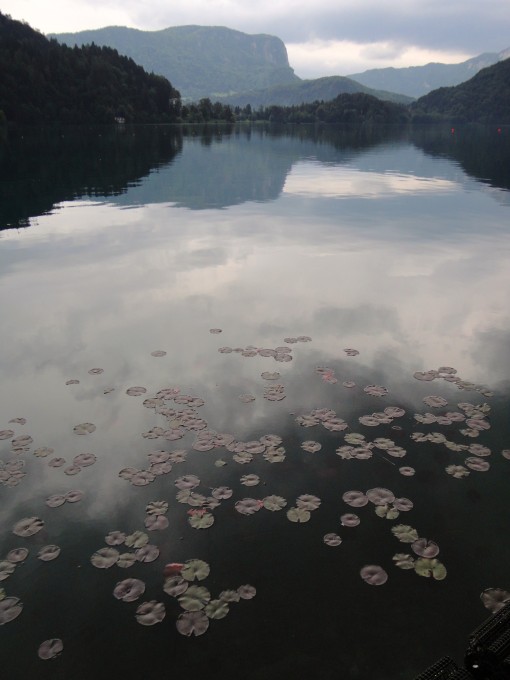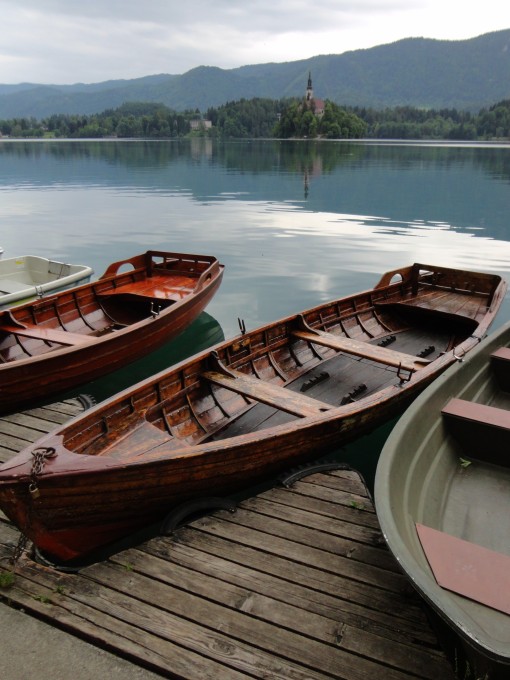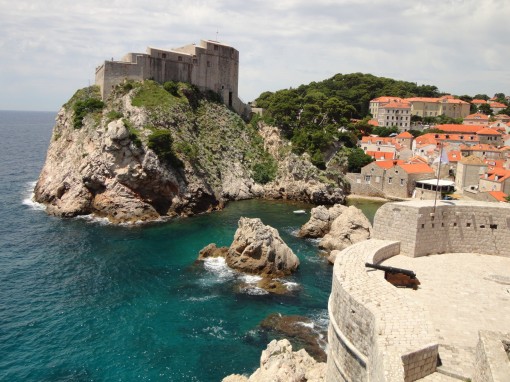It is hard to believe that I find myself back in the small Black Sea town of Kocaali collecting my bags for what will be my final trip to Istanbul Ataturk Airport. Tomorrow I will make my way to Karamursel for a friend’s wedding, and then the following morning it is back to Istanbul with all my belongings.
My travel through Europe certainly ended on a high note. After leaving Mostar, I met up with Seth (my roommate in Malatya) and his friend Vito in Sarajevo. Similar to Prague, the Bosnian capital is rich in natural beauty and history, having seen some of the worst violence during the breakup of Yugoslavia. The streets and buildings are still scarred with marks of the war. Visitors are warned not to venture off paved roads on the outskirts of the city because thousands of landmines still lie hidden throughout the surrounding hills. Despite the freshness of the violence, the people of Sarajevo remain hopeful for their future and are adamant about moving forward.
A perfect example of this is Neno, the self-employed student tour guide who walked us around the city our first day. Along with having an incredibly expansive knowledge of the history of Sarajevo extending back to Ottoman times, Neno was able to talk about the war from personal experience, having been seven when it began. Operating his tours on a tip-only basis, Neno genuinely holds to the principle that the world needs to know Sarajevo’s story. All he wants is for you to fall in love with the city by understanding the lessons of its past, both the good and the bad.
After the long walk with Neno, we refreshed ourselves with some Bosnian coffee and relaxed back at the hotel before taking a (paved road) walk through the hills overlooking the city. We stumbled upon some incredible views of the streets below. The cemeteries next to our vista (marked only with death dates from 1992 – 1995) were a reminder that, while the view is beautiful now, it once served as a perch for snipers and artillery that shelled the city for a four year period. Such violence was often indiscriminate, killing even the elderly and children. In the city center a monument now stands which honors the 1,300 children which were victims of the violence during the mid-nineties.
The following day, we walked to “New Town” where we visited a few museums including the famous Tunnel Museum, which is the location where both goods and people were smuggled in and out of Sarajevo. Today only 25 meters of the once 950 meter tunnel exist to be walked through.
Weary of travel and eager to see a few more sights back in Turkey, I decided to return with Seth and Vito to Istanbul. Here I mostly took care of important business, transferring money and continuing my seemingly endless job search. However, by night I would spend time with Seth and Vito, cruising the Bosphorous or eating under the Galata Bridge. On the morning I left, I was even able to meet Seth’s family who flew in to tour the area.
My next destination was Canakkale. Canakkale is a coastal town close to the location where the Battle of Galipoli took place in the First World War. Along with peaceful surroundings, Canakkale serves as a great base to visit Ancient Troy and Assos, both of which I was able to see.
On June 25th, my plane will land back in DFW. I plan on having some recovery down-time there for any who want to hang out or visit. Afterwards, I am unsure where I will land, but I’ll probably make it around to Houston and Austin before too long. In preparation for my arrival home, I have already fired up the Texas Country on the iPod. Despite the fact that I am currently sitting on a Turkish beach, I can close my eyes in the sun and the sound of Pat Green in my ears almost makes me believe I am home already.
See you soon.
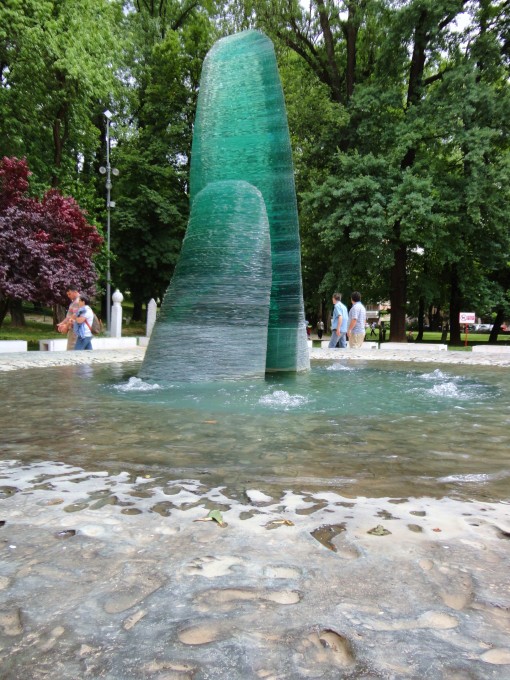
Memorial to Children Victims of the Siege of Sarajevo. The large green figure represents a mother trying to shield her child, the smaller green figure. The base of this fountain was made with melted shell pieces which were stamped with the footprints of family members and friends who lost children during the war.

For four years Sarajevo was indiscriminately bombed from above. In locations where three or more people were killed, the shell markings were filled with red resin. Such memorials are known as Sarajevo Roses. Hundreds exists throughout the city.
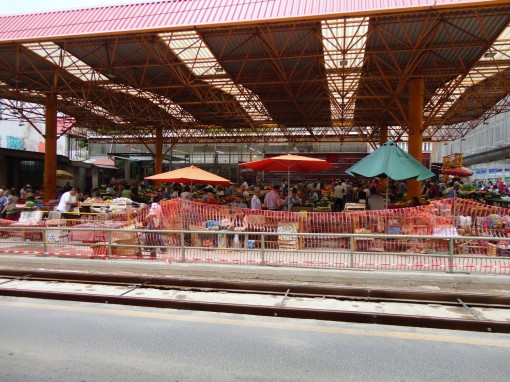
During the siege, most goods were hard to come by. This is the location of the black market which developed during the war years. Neno told us that a kilo of coffee could cost up to the equivalent of fifty euro. On February 5, 1994 this market became the location of the worst bombing during the war. During the first attack, 68 were killed and 144 injured. Later in August of 1995 another shell struck the market killing 37 and injuring another 90.
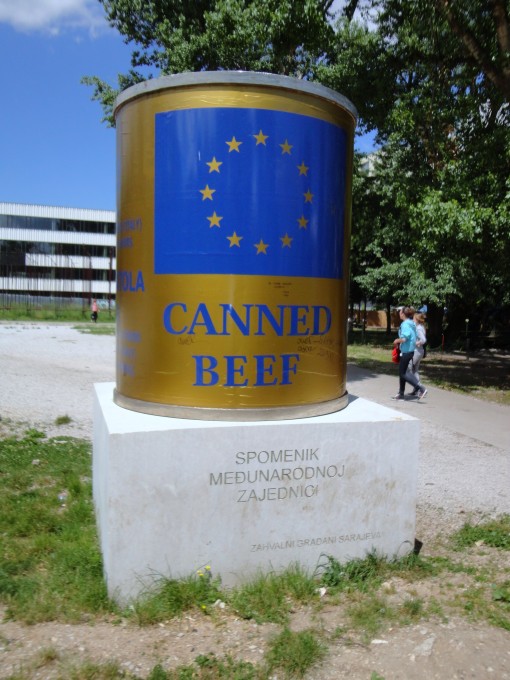
This monument stands as a “thank you” from the people of Sarajevo to the international community. Neno told us that the food aid that was delivered by the UN and other organizations was both monotonous and disgusting. At the end of the war, this giant “canned beef” (typical food donated from around the world) was created. Something to think about when you give food donations.

The view from the Latin Bridge looking to the corner where Franz Ferdinand was assassinated. This event sparked the onset of World War I.

The Temple of Athena was built in Assos around 530 B.C. From here Hermeias, a student of Plato, ruled before he was defeated and killed by the Persians. During his rule, he encouraged education, inviting philosophers to come live within the city. In 350 B.C. Aristotle settled here marrying Hermeias’s niece.





